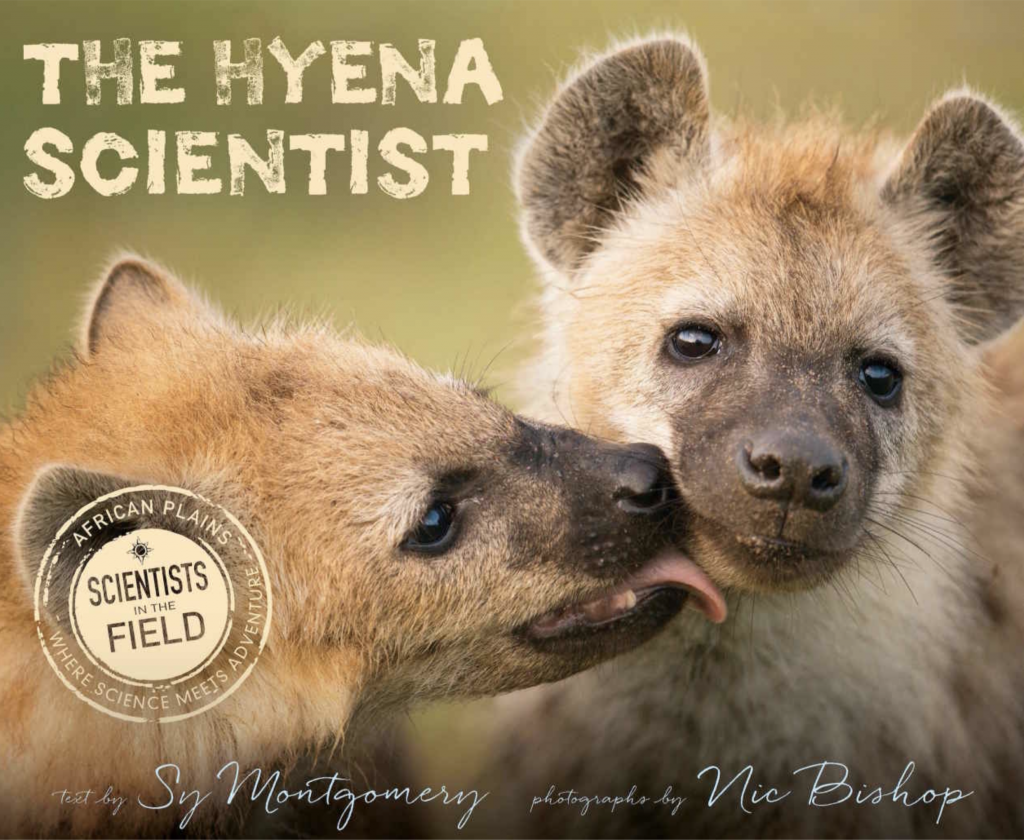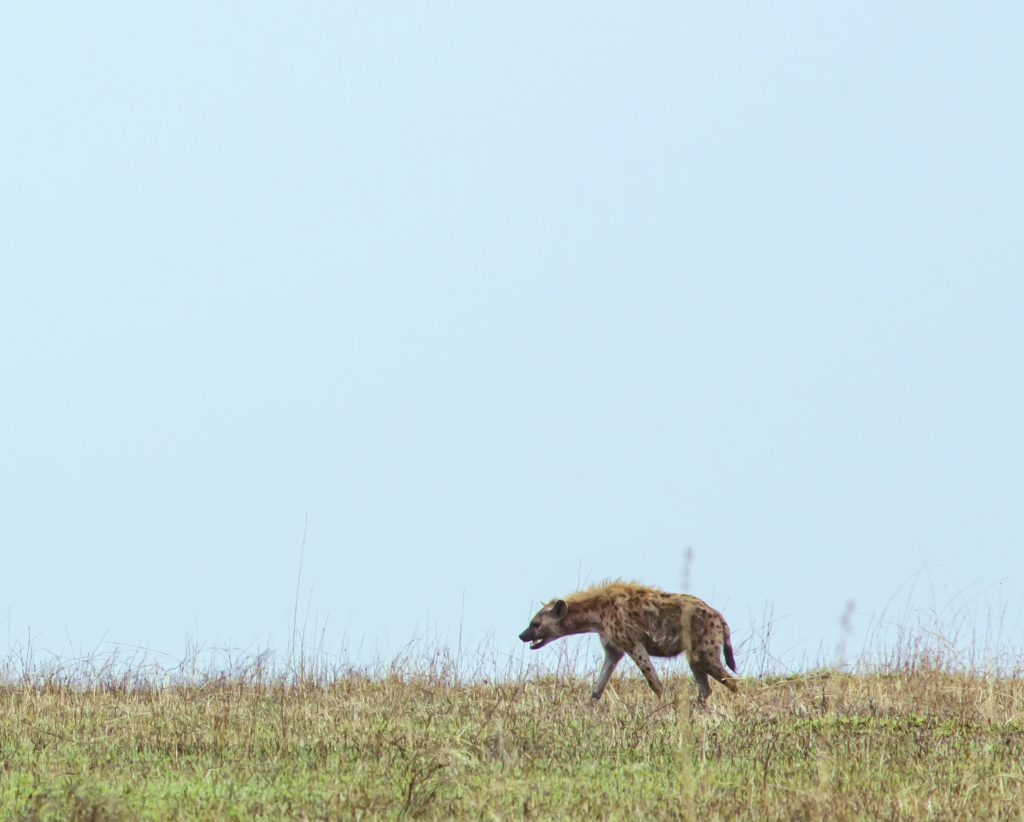
Montgomery, Sy and Nic Bishop. The Hyena Scientist. (Houghton Mifflin Harcourt, 2018)
Review by Marion Reynolds
“Today is May 16, time 5:35.” Kay Holekamp, hyena researcher extraordinaire, her student research assistant Ciara Main, and guests Sy and Nic head out on an early morning observation.
“Shortly after we move on from the den, we spot a low-ranking female, Baez, who offers us a piece of the puzzle that may help answer these questions: she poops. ‘Great!’ cries Kate, who reacts as if Baez has just offered her a treasure. In a way, she has: poop offers an easy way for scientists to see what prey species the hyenas have eaten, discover any parasites that infest their guts, and measure concentrations of many of the hormones that drive or reflect behavior. So each time a hyena poops and a researcher sees it, one of the team leaps out of the car . . . to collect it in a plastic bag for later study.” (Montgomery, p. 26, 2018). In this case, Ciara, a student headed for graduate study in hyenas’ female-dominated species, collects the sample.
Science journalist Sy Montgomery and photographer Nic Bishop’s latest addition to the Scientist in the Field series, The Hyena Scientist dispels myths and misunderstandings about the of true nature of the African spotted hyena, profiles the presence of women in science, and tells the story, through anecdotes and examples, of Kay’s decades-long research in the field. The unfairly maligned hyenas resemble dogs, but are more closely related to the mongoose. Hyenas belong to their own family, the Hyenidae.

Montgomery models what it means to be curious with her emphasis on science as an endeavor characterized by seeking answers to questions that arise in field research. In the poop collecting anecdote, the questions include: “Biologically, what drives this odd, rigidly regimented, female-dominated society? What role if any, do natural body chemicals like hormones play? How do the hormone levels of male hyenas differ from females, and how do high-ranking females’ hormones compare with those of low-ranking ones?”
Kay’s research team includes Dee White, data manager and research assistant; three student interns, Ciara Main, Jared Grimmer, and Amy Fontaine; research assistant Benson Ole Pion, a local Maasai herdsman; and the all-important Kenyan support staff. Montgomery profiles each member of the team, who share a fascination for wild animals since early childhood. As guests, Sy and Nic fully participate in life in Fisi Camp, located in the Maasai Mara region of Kenya, south of the equator. Upon arriving, Jared escorts Sy and Nic about the camp. The tents are equipped with three zippers, the confluence of which are stuffed with a sock so as to deter determined snakes from squeezing through the small opening. Next, Jared demonstrates the screened, open-to-the sky hot shower, and then on to the nuances of the similarly screened toilet. After a tasty dinner in the mess tent lit by solar-powered lights, they retire for the evening. “As night falls, the dark throbs with unseen voices: fruit bats beeping like electric alarm clocks, nightjars whistling like lonely ghosts, jackals calling with rusty-hinge squeaks. Insects and frogs chime, tick, pop, hum . . . . But its’s not until I am snug in my bed that I hear the nighttime welcome I’ve been waiting for: the haunting oooooOOO-Whoop! of a distant hyena, calling to her family in the night.” (Montgomery, p. 17, 2018)
A reader might wonder why, in addition to adventure, study hyenas. “Hyenas, Kay maintains, are fascinating because they are just so different: not only from the reputation that precedes them, but from most mammals in general. Because their clans are dominated by females, hyenas break the ‘rules’ governing most mammalian societies – and that gives us a fresh way of looking at the more usual arrangement. And far from skulking, cowardly scavengers, spotted hyenas are among the most intelligent and social mammals on earth.” (Montgomery, p. 67, 2018)
Other titles in the award-winning Scientist in the Field series by Montgomery and Bishop include The Snake Scientist; The Tarantula Scientist; The Tapir Scientist; Chasing Cheetahs; Quest for the Tree Kangaroo; Saving the Ghost of the Mountain, An Expedition Among Snow Leopards in Mongolia; and Kakapo Rescue: Saving the World’s Strangest Parrot. Sy has worked with photographer Keith Ellenbogen on additional titles in the Scientists in the Field series. In each book the story of the expedition features participation in the field research, interviews with the scientists and their teams, and the science of animals under study. Short chapters, full-color photographs, and lively writing make the information accessible to elementary age readers throughout the series.
Web Resources
Kay’s research assistants and students blog from Masai Mara about their research: msuhyenas.blogspot.com
Listen to the sounds hyenas make: hyenatalk.weebly.com


Thanks for this insightful information. It really helped me understand the topic better. Nice!